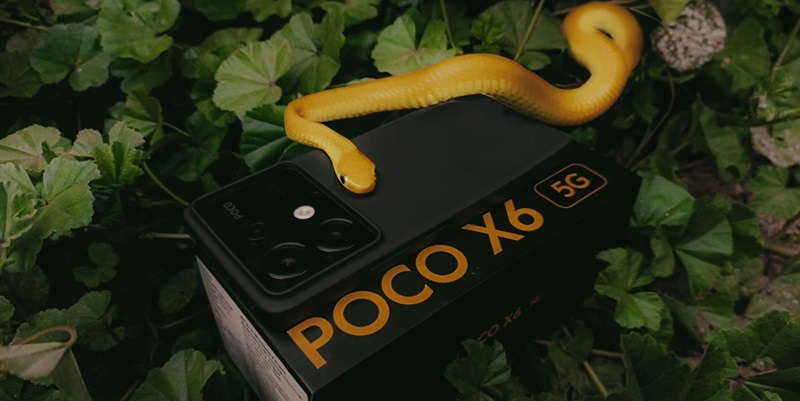As the global smartphone market eagerly anticipates the next big release, eyes are turning towards Xiaomi’s rumored POCO X7, which is expected to inherit some impressive features from the newly launched Redmi Note 14 Pro 5G. According to various sources, including Xiaomi Time, evidence of the POCO X7 has been found in Xiaomi’s codebase, suggesting that a global rollout is imminent. This model is set to replace the POCO X6 5G and could potentially redefine what consumers expect from mid-range smartphones in terms of performance and camera quality.
The POCO X7 is rumored to feature a powerful 50 MP primary camera, likely to be the Sony LYT-600, complete with optical image stabilization (OIS). This camera setup promises to bring a high level of photography to the mid-range market, where such advanced features are often lacking. In addition to the primary camera, the device is expected to sport a 20 MP OmniVision OV20B front-facing camera, a 2 MP OmniVision OV02B10 macro lens, and an 8 MP Sony IMX335 for ultra-wide shots. These specifications mirror those found in the Chinese variant of the Redmi Note 14 Pro, raising expectations that the POCO X7 will deliver a similar camera experience to users worldwide.
Camera Capabilities and Display Tech
The POCO X7 stands out with its advanced camera capabilities, a hallmark of Xiaomi’s strategy to integrate high-end technology into more affordable devices. The 50 MP primary camera with OIS aims to deliver sharp, clear images even in challenging conditions, such as low light or fast motion. This is complemented by the 20 MP front-facing camera, which is designed to capture detailed selfies and high-quality videos for social media enthusiasts and vloggers. The additional 2 MP macro and 8 MP ultra-wide cameras provide versatility, allowing users to experiment with different photographic styles and perspectives.
Pairing this impressive camera setup is a 6.67-inch 1.5K curved OLED display, boasting a 120 Hz refresh rate and 1,200 nits HBM brightness. The high resolution and curved design aim to provide an immersive viewing experience, whether watching videos or playing games. This display technology ensures that images and videos appear vibrant and crisp, enhancing overall user satisfaction. The 120 Hz refresh rate also means smoother animations and less motion blur, making the device suitable for gamers and heavy multimedia consumers.
Performance and Battery Life
Under the hood, the POCO X7 is expected to be powered by the MediaTek Dimensity 7300 Ultra chipset, which promises robust performance across a range of applications. This chipset is paired with LPDDR4x RAM and UFS 2.2 flash storage, ensuring fast data read and write speeds, which contribute to a smoother user experience. This combination of hardware not only supports the advanced camera and display features but also ensures that the device can handle multiple tasks with ease, making it a versatile choice for a wide range of users.
Battery life is another critical aspect where the POCO X7 aims to excel. The smartphone is rumored to come with a 5,500 mAh battery, supporting 45 W fast charging. This substantial battery capacity is designed to offer extended usage times, allowing users to go through an entire day of heavy usage without needing to recharge. The 45 W fast charging capability means that even when the battery does run low, it can be quickly recharged, minimizing downtime. These features combined, make the POCO X7 a promising option for people who demand both performance and endurance from their smartphones.
Xiaomi’s Strategic Rebranding and Market Impact
As the global smartphone market eagerly awaits the next major release, attention is shifting towards Xiaomi’s rumored POCO X7, expected to inherit impressive features from the newly launched Redmi Note 14 Pro 5G. According to sources like Xiaomi Time, the POCO X7 has been spotted in Xiaomi’s codebase, hinting at a forthcoming global launch. This model aims to succeed the POCO X6 5G and could potentially set new benchmarks for mid-range smartphones, particularly in terms of performance and camera quality.
The POCO X7 is rumored to boast a powerful 50 MP primary camera, likely to be the Sony LYT-600, equipped with optical image stabilization (OIS). This camera setup promises to elevate photography standards in the mid-range market, where advanced features are often scarce. Additionally, the device is expected to include a 20 MP OmniVision OV20B front-facing camera, a 2 MP OmniVision OV02B10 macro lens, and an 8 MP Sony IMX335 for ultra-wide shots. These specifications reflect those of the Chinese variant of the Redmi Note 14 Pro, creating high expectations that the POCO X7 will provide a similar camera experience to users worldwide.

